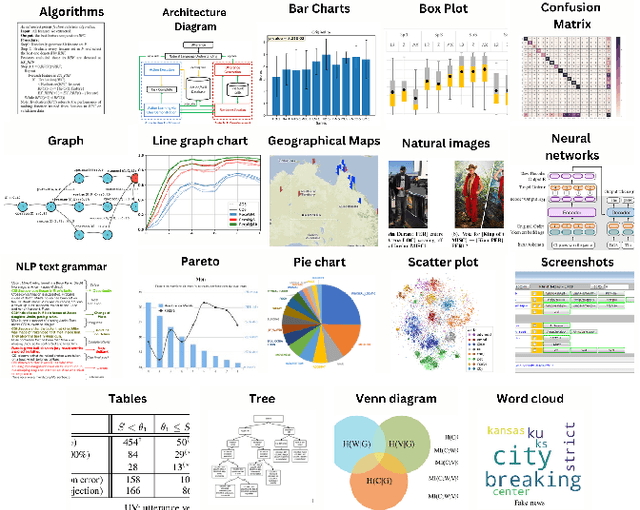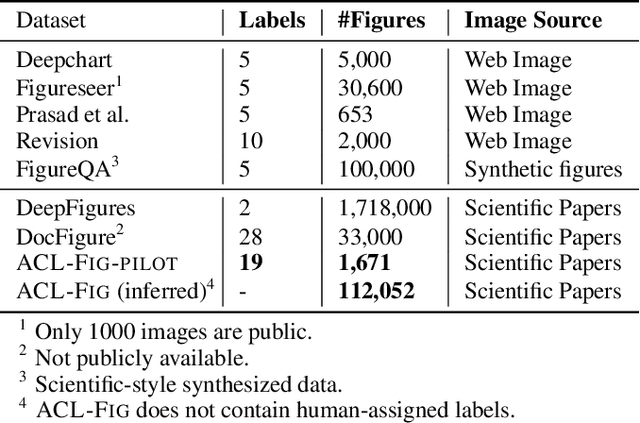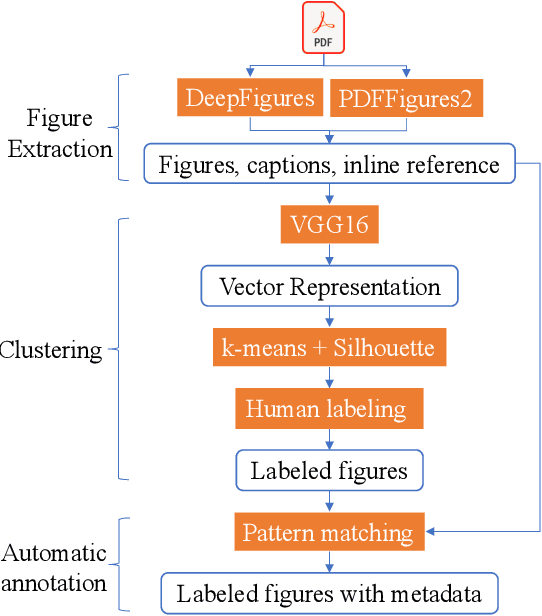Zeba Karishma
ACL-Fig: A Dataset for Scientific Figure Classification
Jan 28, 2023



Abstract:Most existing large-scale academic search engines are built to retrieve text-based information. However, there are no large-scale retrieval services for scientific figures and tables. One challenge for such services is understanding scientific figures' semantics, such as their types and purposes. A key obstacle is the need for datasets containing annotated scientific figures and tables, which can then be used for classification, question-answering, and auto-captioning. Here, we develop a pipeline that extracts figures and tables from the scientific literature and a deep-learning-based framework that classifies scientific figures using visual features. Using this pipeline, we built the first large-scale automatically annotated corpus, ACL-Fig, consisting of 112,052 scientific figures extracted from ~56K research papers in the ACL Anthology. The ACL-Fig-Pilot dataset contains 1,671 manually labeled scientific figures belonging to 19 categories. The dataset is accessible at https://huggingface.co/datasets/citeseerx/ACL-fig under a CC BY-NC license.
A `Sourceful' Twist: Emoji Prediction Based on Sentiment, Hashtags and Application Source
Mar 14, 2021



Abstract:We widely use emojis in social networking to heighten, mitigate or negate the sentiment of the text. Emoji suggestions already exist in many cross-platform applications but an emoji is predicted solely based a few prominent words instead of understanding the subject and substance of the text. Through this paper, we showcase the importance of using Twitter features to help the model understand the sentiment involved and hence to predict the most suitable emoji for the text. Hashtags and Application Sources like Android, etc. are two features which we found to be important yet underused in emoji prediction and Twitter sentiment analysis on the whole. To approach this shortcoming and to further understand emoji behavioral patterns, we propose a more balanced dataset by crawling additional Twitter data, including timestamp, hashtags, and application source acting as additional attributes to the tweet. Our data analysis and neural network model performance evaluations depict that using hashtags and application sources as features allows to encode different information and is effective in emoji prediction.
 Add to Chrome
Add to Chrome Add to Firefox
Add to Firefox Add to Edge
Add to Edge